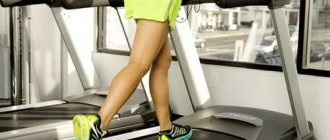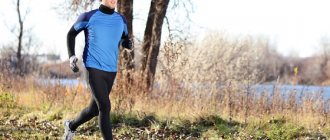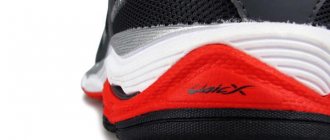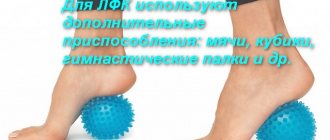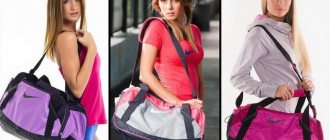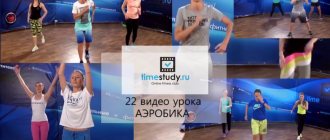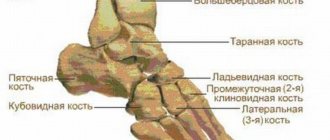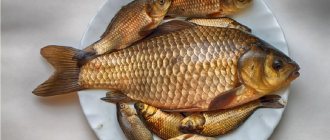Shoes for flat feet
Foot deformation manifests itself when choosing the wrong shoes for both running and normal walking.
If the pair is not suitable, then overpronation of the foot occurs when the perpendicular position of the axis changes, that is, it begins to “fall” inward. This condition manifests itself by rapid wear of the outer part of the heels. The left and right feet most often have varying degrees of flat feet. This creates some imbalance when the axis of the ankles shifts, which entails uneven deformation of the skeleton and distortion of the figure. To avoid such an unfavorable consequence, you need to wear special orthopedic shoes.
The importance of orthopedic shoes
Flat feet is a deformation of one or two feet, consisting in a decrease in the characteristic deflection (the so-called “arch of the foot”) and a lowering of its arch.
It is necessary to understand that flat feet are not just an aesthetic problem, but a serious violation of the mechanics of the joints of the knees and legs. People suffering from flat feet are advised to avoid flat-soled shoes as much as possible (walking in beach flip-flops has a particularly detrimental effect on the arch) and use exclusively orthopedic shoes that provide additional support for the foot.
Two types of flat feet
Some runners have anatomically flat legs, and other runners have what are called “collapsed arches,” which are flat due to muscle weakness. While the two types may look very similar, the approach to shoe shopping for them is very different, says Dr. Kimberly Davis of RunLab, a clinic in Austin, Texas, that evaluates running biomechanics and offers physical therapy and training.
Dr. Davis says that when it comes to buying shoes for a runner with flat feet who has drooping arches due to muscle weakness, you can add arch support until the foot is stronger and can support its own arch. But with an anatomically flat foot, the arch support simply directs stress into the knee, where it can lead to knee problems.
Medical body scan / Getty Images
This recommendation applies to absolutely any shoe. The most “dangerous” are beach-type flip-flops. You should only wear those models whose style additionally supports the foot. Otherwise, the existing deformation will worsen.
The foot should not move to the right or left. Therefore, shoes should always be well laced. The size should be selected so that there is at least one centimeter of space in the sock, allowing the toes to be free.
What should children's running shoes be like?
Children's feet have a number of features that professional manufacturers of sports shoes take into account:
- The corners in the heel part of the sole are additionally beveled to avoid injury (in children, the angle of contact of the heel with the shoe is not the same as in an adult).
- Children are more likely to have flat feet, so the sole of children's sneakers additionally protects against the risk of placing the foot in an unnatural position.
- Children make weaker kicks with their feet compared to adults. Therefore, the soles of children's sneakers have increased softness.
Photo 2. Children's running shoes, model Pre-Upcourt PS, weight 170 g, .
The main criteria for quality running shoes (type of training, seasonality, safety requirements) for children and adults are the same.
Winter children's models
When choosing children's running shoes for winter, consider:
- The presence of spikes on the sole.
- Waterproof , protected from snow and dirt.
- Insulation, airtightness.
A correctly selected model will protect your child’s feet from cold, dirt and possible injuries on an icy winter road.
The best running shoes for athletes with flat feet
Any orthopedist will tell you that physical activity for the development of the feet plays a big role in therapy, but they should only be performed under the close supervision of a doctor, or by following all his recommendations.
Worth knowing! Running with flat feet is not always possible. Whether it will be possible to combine sports and treatment depends on the degree of damage to the foot. To understand at what level the disease is located, you need to contact an orthopedist in time if you suspect the presence of its symptoms. He will tell you what tests to take to determine the extent of the disease.
Is it possible to play sports with flat feet? Flat feet are not a contraindication to sports, but there are certain restrictions. Figure skating, speed skating, hockey, ballet, classical jumping, tennis and badminton are not recommended.
Is it possible to do athletics? If we consider running and flat feet, then with this pathology it is impossible to run at a professional level. You can run with flat feet for short distances, gradually increasing the load.
Running shoes for flat feet should be comfortable and of high quality. It is important that the model fits exactly in size, width and lift height.
The design with a thin tread and special instep support will provide good shock absorption.
Let's start with the good news: if you have flat feet, this does not prevent you from becoming a successful runner. You can run for a long time and safely if you pay due attention to your training, “alarm signals” if something suddenly starts to bother you and your shoes. In fact, a runner with flat feet is not much different from any other runner - they also need to do everything consistently, listen to their body and wear the right shoes.
We have been selling running shoes for over 10 years. And during this time, a variety of people contacted us. During this time, we have tested a huge number of sneakers available on the market. Our advice, of course, will not suit everyone, but we have done our job and recommend these models with full responsibility and a clear conscience. In addition, you can view the entire catalog of stabilizing sneakers.
Once again, flat feet are just one of many characteristics that can determine your choice of shoes. However, we know that some runners with flat feet struggle to find more comfortable shoes with enough volume to fit the shape of their feet. With that in mind, we reached out to running shoe brands, runners with flat feet, and medical professionals for a list of shoes that might be a good option for runners with flat feet. That's what they said.
Answers to the most common questions about running shoes for overpronation
- Is it possible to run in regular running shoes with flat feet?
It is possible, but good depreciation is required. It is better to replace the standard insole with your own, made to fit the shape of the foot.
- Are running shoes suitable for natural running for an overpronator?
Only for special training on foot development and running technique. It is better not to run in them regularly.
- Are running shoes for overpronation only suitable for those with flat feet?
No. In running shoes for overpronators, you can run with neutral pronation, if comfortable. Especially long workouts and marathons, when the foot begins to collapse from fatigue.
- Will regular running shoes fit with orthotics?
Yes, you can add insoles to neutral sneakers. Better than nothing, but this design will be less stable, because the insole remains a soft base. Sneakers for flat feet have a hard insert in the sole; the insole will not provide such rigidity.
How to choose sneakers and orthopedic insoles for flat feet
About 45% of all adults on the planet suffer from flat feet, and this disease is especially common in women. Both for sports and for everyday life, if you have flat feet, it is extremely important to use special orthopedic shoes or orthopedic insoles that provide additional support and fixation of the arch of the foot.
Nike Epic React Flyknit 2
Men with flat feet are strongly advised to avoid flat-soled shoes (especially beach flip-flops and budget sneakers), and women should limit the use of high-heeled shoes as much as possible. Otherwise, flat feet will progress, leading to the development of deep-seated skeletal deformities and chronic pain.
Flat feet is a deformity of one or two feet, consisting of a decrease in the deflection of the foot (the so-called “arch”) and a lowering of its arch. Longitudinal flatfoot is characterized by an increase in the length of the foot, and transverse flatfoot is characterized by an expansion of its width. Due to genetic characteristics, transverse flatfoot is usually observed in women (about 20 times more often than in men).
Nike Zoom Pegasus Turbo 2
It is important to understand that flat feet are not just an aesthetic problem, but a serious disorder leading to a complete change in the mechanics of the knee and hip joints. Without proper treatment, flat feet tend to progress. In extreme cases, the foot can become so severely deformed that the person becomes unable to walk.
Playing sports (especially running) with flat feet in ordinary and unsuitable shoes provokes overpronation of the foot - in simple words, the axis of the ankle begins to “fall” inward from its normal perpendicular position (1). Such displacement gradually leads to serious disturbances in gait and posture.
The situation is aggravated by the fact that in a particular person the degrees of flat feet of the left and right legs usually differ, provoking the development of uneven skeletal distortions. One of the characteristic signs of such a problem is the quickly wearing outer part of casual or running shoes, which occurs due to improper distribution of the load on the foot.
Running with flat feet (both longitudinal and transverse) necessarily requires the use of special shoes or orthopedic insoles - otherwise, foot deformation can significantly accelerate, causing irreversible consequences not only in the knee joints, but throughout the entire skeleton. This is especially critical for people who are overweight.
adidas ultraboost 19
Flat-soled sneakers or even regular running shoes without orthotics should never be used in sports if you have flat feet. It is extremely important to use shoes that provide adequate arch support and provide a secure foot fit (which in turn will prevent the ankle from collapsing “in”).
The ideal choice for running or other sports with flat feet is special running shoes designed to support the foot and provide additional support to its arch. Almost all major manufacturers of sports shoes have similar models in their collections. Sneakers must be tightly laced and the correct size.
Asics Gel-Kayano. The Asics line has several models of running shoes suitable for running with flat feet - Gel-DS Trainer, Gel-Kayano, GT-2000, Gel-Foundation, GT-1000 and Gel-Flux. One of the best is the Asics Gel-Kayano, which has been in production since the early 1990s and received its twenty-third rebirth this year.
Nike LunarGlide. In the line of Nike sneakers, only two models are suitable for running with overpronation of the foot - LunarGlide and The main difference is the weight and massiveness - the more compact LunarGlide sneakers and the rather massive AirZoom. It is also important to consider that Nike makes narrower sneakers compared to other manufacturers.
New Balance 860. The main difference between New Balance is the presence of a number of models of running shoes for different types of flat feet. The New Balance 860 provides additional heel support and lock-in, while the New Balance 1260 provides enhanced arch support and increased cushioning as you run.
As FitSeven mentioned above, transverse flatfoot is characterized by an increase in the width of the foot and is usually seen in women. That is why girls for jogging or other active types of fitness will need sneakers with wide soles - that is, more likely models from New Balance or Asics, and not from Nike, which produce narrower shoes.
Separately, the models of sneakers from the same manufacturers do not provide additional cushioning and support for the arch of the foot, so they are absolutely not suitable for running with flat feet - trying to save money, you risk buying completely unsuitable shoes. However, orthopedic insoles placed inside the sneakers can help you.
If you do not have the opportunity to buy running shoes that are fully suitable for running with flat feet (not to mention expensive individual orthopedic shoes), the problem can be partially solved by using a conventional model with foot fixation and additional shock absorption - however, by replacing the insole with an orthopedic one that provides support for the arch of the foot .
In this case, you must first purchase orthopedic insoles that suit you, and only then go to the store to buy sneakers. Such an insole often makes the shoe narrower and you may need a size slightly larger than usual. In fact, when purchasing, it is recommended to try on the running shoes and insert your own orthotics into them.
The presence of flat feet necessarily requires the use of orthopedic shoes, special sneakers or orthopedic insoles. Such shoes should absorb the load when walking or running, securely fix the foot and gently support its arch, preventing unwanted ankle roll inward.
Rules for choosing sports sneakers and orthopedic insoles for flat feet. Why is running in regular sneakers with flat feet harmful to health and contraindicated?
There are many situations in which people with flat feet need to wear flat shoes. If there is such a need, orthopedic insoles can provide foot support. It is necessary to remember that they will make the shoes much narrower.
It is recommended to buy insoles made taking into account individual characteristics, that is, made to order. When it is not possible to purchase these, even using ready-made models available for sale will be much better than just wearing shoes with flat soles.
Recommendations and advice from professionals
If your orthopedist allows you to run, follow the basic recommendations. Since the foot should act as a shock absorber, you need to first take care of purchasing the right shoes. With stage 2 flat feet, it is necessary not only for running, but also for walking. This is the basis for the rules that should be followed when a person runs:
- Selection of orthopedic shoes (insoles). On the recommendation of the doctor, purchase specialized shoes for running and walking, or buy orthopedic insoles. They are very comfortable and practical. The adhesive base helps to firmly secure the product at foot level; If you need to choose shoes, preference should be given to sneakers with high shock absorption, the right arch support, which does not bend the arch of the foot. Increased cushioning of running shoes for flat feet, a correctly selected size, and good foot circumference will make exercise not only enjoyable, but also useful. Insoles are chosen not by shoe size, but by feet. It is recommended in an orthopedic salon to apply them to the foot, the orthopedic protrusion should be above the arch, the heel should be in the right place. Today, many sports stores can offer specialized orthopedic insoles for running.
- Running technique also affects the disease. Only a professional trainer can determine the required pace and method of planting the foot. They will vary depending on the degree of pathology. Orthopedists advise alternating running with flat feet with general strengthening exercises that tone the arch of the foot. These include raising on your toes, rolling, squeezing your fingers in the girth. You should only run on soft surfaces so as not to injure your legs;
- It will be extremely useful in complex therapy to massage the foot after physical activity. Self-massage consists of rolling the foot on a rounded surface, walking on massage mats, soil, stones, grass, etc. You can perform rubbing, pressing on the legs, feet;
- Perform special exercises several times a day. Walking with flat feet on the outer and inner sides of the foot, on an inclined plane, high raising on the toes, and rolls is popular.
Recommendations for running with flat feet
If you have flat feet and run, you should pay attention to the following tips:
- Use physical activity in doses (jogging should not exceed 40 minutes);
- Do not exceed the weekly volume of 50-60 km;
- It is worth combining running with general therapy, which will be prescribed by the doctor (in most cases, it consists of constantly wearing orthotics, performing massage and special exercises to develop the arch of the foot).
Be careful!
If, while running with flat feet, you begin to experience discomfort in the lower leg, foot, lower back, or knees, you need to reduce the load, even if you run according to all the recommendations of a specialist. Probably the selected technique is not entirely suitable.
Running with flat feet
Requires the use of special sports shoes. They should fit well on the foot so that the ankles do not move to the inside. Shoes should support your feet securely without any excessive cushioning.
Many well-known brands produce running shoes that provide additional arch support. The best models are the following: Saucony Omni 13, Nike LunarGlide 6, Asics GEL-Kayano and New Balance 860v4.
Running shoes must be properly sized and laced tightly when worn. They must meet all the requirements for such sports shoes.
Longitudinal or transverse flatfoot
Flat feet is a deformity of one or two feet, consisting of a decrease in the deflection of the foot (the so-called “arch”) and a lowering of its arch. Longitudinal flatfoot is characterized by an increase in the length of the foot, and transverse flatfoot is characterized by an expansion of its width. Due to genetic characteristics, transverse flatfoot is usually observed in women (about 20 times more often than in men).
Nike Zoom Pegasus Turbo 2
It is important to understand that flat feet are not just an aesthetic problem, but a serious disorder that leads to a complete change in the mechanics of the knee and hip joints. Without proper treatment, flat feet tend to progress. In extreme cases, the foot can become so severely deformed that the person becomes unable to walk.
Transverse flatfoot is characterized by an increase in the width of the foot and is usually observed in women. That is why girls for jogging or other active types of fitness will need sneakers with wide soles - that is, more likely models from New Balance or Asics, and not from Nike, which produce narrower shoes.
Separately, the models of sneakers from the same manufacturers do not provide additional cushioning and support for the arch of the foot, so they are absolutely not suitable for running with flat feet - trying to save money, you risk buying completely unsuitable shoes. However, orthopedic insoles placed inside the sneakers can help you.
We suggest you familiarize yourself with: X-ray of the pelvic bones - Website about the diagnosis of diseases
Gymnastics for flat feet
Special exercises cannot completely cure flat feet, but they help get rid of pain, if any, and increase endurance. The latter is of paramount importance for those who work while standing or running.
Special training involves performing exercises that develop the mobility of the toes, jogging and walking barefoot in the sand. In addition, you need to walk on your toes, as well as alternately on the inside and outside of your feet.
Rules of care
Rules:
- Promptly clean from dirt and dust immediately after finishing training (with a slightly damp cloth or using special means for removing dirt from shoes).
- Do not train in poorly dried shoes (they will quickly stretch and become unsuitable for running).
- Regularly treat the surface with water-repellent and dirt-proofing agents.
With proper timely care, high-quality running shoes will last a long time, and running in them will be comfortable and safe.
Flat shoes
The comfort of shoes does not mean they are harmless. Shoes with flat soles do not support the arches of the feet in a physiologically correct position and do not protect the musculoskeletal system from the shock load when walking. The foot “spreads out”.
In addition, there are flat-soled shoes that are not secured to the foot with laces and fasteners. These are ballet shoes. They are loose and are held mainly on the toes, which is why the toes are in constant tension and bend inward with every step. Like high-heeled shoes, ballet shoes lead to changes in gait: a person shuffles and clubbing.
The well-known “bunion,” or deformation of the big toe, is the most common consequence of regularly wearing ballet flats, sneakers, slippers, and UGG boots. A “heel spur,” which occurs because the flat sole is unable to absorb the impact of the heel on the ground, is accompanied by severe pain. In the future, such “slippers” cause more serious problems - with posture and joints.
It is necessary to replace such shoes with shoes with a last relief, a stable heel and a “correct” insole with arch support.
Shoes that are too narrow
Narrow shoes squeeze your feet. The forefoot cannot be positioned freely. The thumb and little finger are pressed inward, and the middle fingers are bent. An unnatural position, first of all, provokes the appearance of calluses.
Also, pinched toes do not participate in the smooth roll of the foot from heel to toe. The gait ceases to be easy and the joints suffer - the shock load when walking with pinched fingers is distributed unevenly.
Due to tight shoes, normal blood flow is disrupted. There are prerequisites for numbness, cramps, premature leg fatigue and swelling at the end of the day.
Therefore, shoes that closely follow the natural contours of the foot are preferred.
Shoes made from non-natural materials
Artificial materials often do not allow air to pass through. The foot in such shoes does not “breathe”. This leads to increased sweating, and the consequences are diaper rash, fungal diseases and frequent calluses.
Shoes made from non-natural materials are difficult to stretch and slowly take on the natural shape of the foot. Therefore, the initial period of use provokes the development of flat feet. In an awkward position, it is difficult for the foot to maintain the anatomically correct arch of the foot, absorb the impact of the heel on the ground, and smoothly roll onto the toe when walking.
